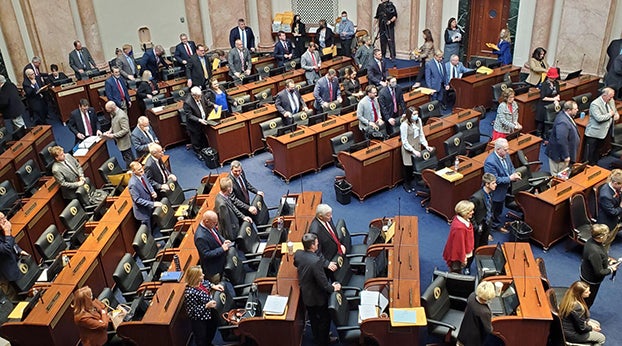Arguments heard on subdivision zone change
Published 5:01 pm Friday, February 25, 2022
The Danville City Commission heard from the public and the developer about his proposed subdivision zone change between the Candlewood and Colonial Heights subdivisions on Monday.
The planning and zoning commission had made their recommendation for this zone change from R1A to R1C at 0. Hartland and 0. Ridgeview. The city commission requested an ordinance be drafted.
Since residents in the Colonial Heights subdivision had expressed opposition at the planning meeting, the city proceeded with an argument-style hearing after the first reading of the ordinance.
This type of hearing allowed both sides to express why they believe the zone change is or is not consistent with the comprehensive plan for low density housing. However, no one could introduce new evidence like photos, data or expert reports that wasn’t submitted to the planning commission.
The R1A classification for subdivisions requires lot sizes of at least 10,000 square feet and 70 feet in width, and R1C needs a minimum of 5,000 square feet and 50 feet in width. Changing from R1A to R1C would allow an increase of homes on the property from 91 to 121.
The developer, Joedy Sharpe, said the reason for this subdivision is a need for more affordable housing in Boyle County. Sharpe said the housing taskforce committee in Economic Development approached him seeking solutions to a housing shortage in the community.
“I’ve looked at what’s out here and what’s available, and my assessment is that there are lot shortages in Danville and Boyle County,” Sharpe said. “Anytime you have lot shortages, you have housing shortages.”
He said the county needs greater densities in housing developments to decrease lot costs, which are usually between $30,000 to $40,000 in the county. He said the property has been zoned for residential use since 1971.
While R1C allows for multi-family housing and apartments, Sharpe amended that houses on the property would be detached single family homes that are not mobile or modular homes. House prices will be $200,000 to $300,000.
While Sharpe previously said he could move forward with a development as R1A, he likely would not do so without changing the zone to R1C.
“Here is an economic analysis you need to be aware of: the additional lots make this project,” Sharpe said. “Without these lots, there will be no project, because the risk involved is not worth going forward. With this risk, I’m willing to bet that enables me to address a need for this community. That is my sole motive for being here.”
Resident of Colonial Heights David Mullins made a presentation on behalf of neighbors in Colonial Heights. The subdivision garnered a petition of 126 signatures opposing the zone change.
Mullins, who is an engineer, said the proposed subdivision would not be compatible with their neighborhood. Colonial Heights has mostly larger homes that are not considered affordable living. Mullins explained the houses in an R1C zone would be significantly smaller. The subdivisions on both sides of the property are R1A zones.
“Placing this development side by side with Colonial Heights, there will be a clear marker, when you’re driving through the neighborhood, you’re going to know when you’ve left Colonial Heights and entered this new development; it will not be a gradual change,” Mullins said.
Sharpe said, “This proposal conforms to and is compatible with the surrounding area, that being single family residential homes.”
One goal of the comprehensive plan is to respect the character of the existing neighborhoods by encouraging new development that will conform to the existing context.
“What that means to me is that the properties next to my house are going to look something like my house,” Mullins said. “I don’t feel that this goal is being met.”
Commissioner Jennie Hollon agreed that this part of the comprehensive plan would not be met. But she disagreed when Mullins said residents believe there is not a big need for affordable housing from data that they found.
“A lot of my constituents have been asking for housing they could afford,” Hollon said. “Many have bought just what’s available. There’s a huge need with working couples and families with kids for single level homes.”
She said many of her constituents are commuting from Stanford and Harrodsburg. Commissioner Denise Terry, who is a realtor, agreed about the housing need in Boyle County.
“The reason houses are not selling for under $250,000 is because they’re not there, they are not in Boyle County,” Terry said. “We have two large groups looking for the same product. We have older, retired people looking to downsize, and we have millennials that do not want the big house and big yard.”
Terry said she has buyers who have been looking for an affordable house for over a year. Some of her buyers have gone to rural parts of Lincoln County for something affordable.
Neighbors are concerned about the impact a new subdivision would have on their property values. They are also concerned about the absence of a traffic study before the zone change approval. However, the city said there will be a traffic study done in the preliminary stages of construction plans, and the subdivision will be built around its findings.
Without much information about what the subdivision would look like, Mullins said this project is not being handled the same as previous projects where more information was required before a zone change.
The commission did not take a vote on the ordinance. They will discuss it further in their next meeting.







